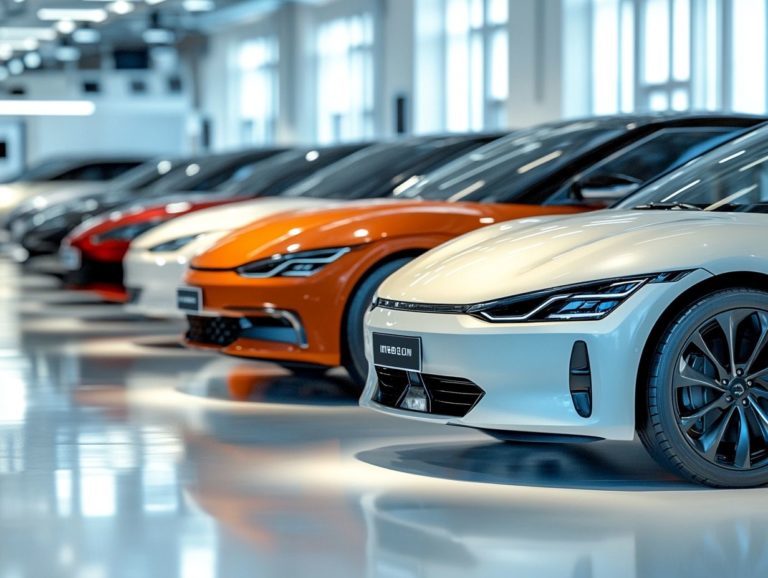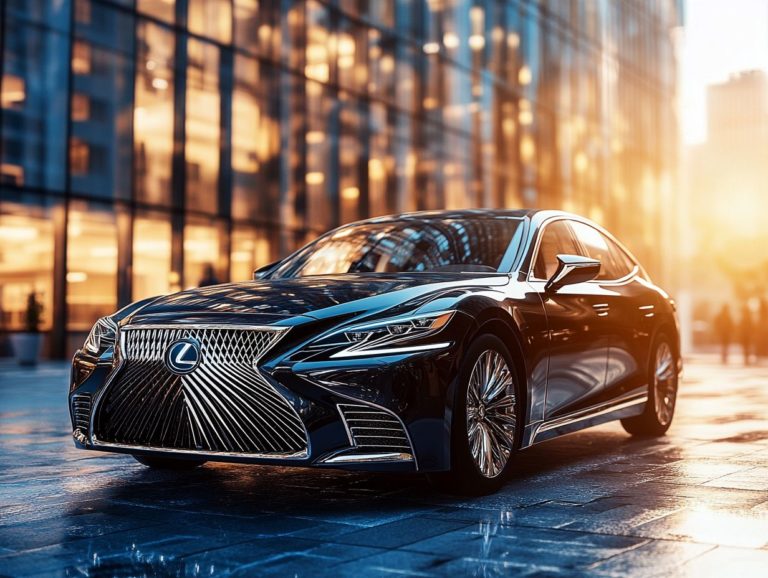Price Comparison: New vs. Used Cars in 2024
Navigating the car market can seem overwhelming, especially when you’re faced with the choice between new and used vehicles.
In 2024, grasping the factors that influence pricing is essential for making an informed decision. This article delves into the various elements that affect the prices of both new and used cars, weighing the pros and cons of each option, and comparing popular models.
You’ll also discover valuable tips and negotiation strategies designed to help you secure the best deal possible. Whether you’re a first-time buyer or planning to upgrade, this guide is your key to unlocking the best deals in the car market right now!
Contents
- Key Takeaways:
- Factors Affecting New and Used Car Prices
- Pros and Cons of Buying New Cars
- Pros and Cons of Buying Used Cars
- Comparing Prices of Popular Car Models
- Tips for Getting the Best Deal on a New or Used Car
- Frequently Asked Questions
- What is the predicted price difference between new and used cars in 2024?
- Why do new cars tend to have a higher price compared to used cars?
- How much can I save by purchasing a used car instead of a new one in 2024?
- Will the price difference between new and used cars in 2024 vary based on the car make and model?
- What are some factors to consider when deciding between a new or used car purchase in 2024?
- Can I negotiate the price for a new or used car in 2024?
Key Takeaways:
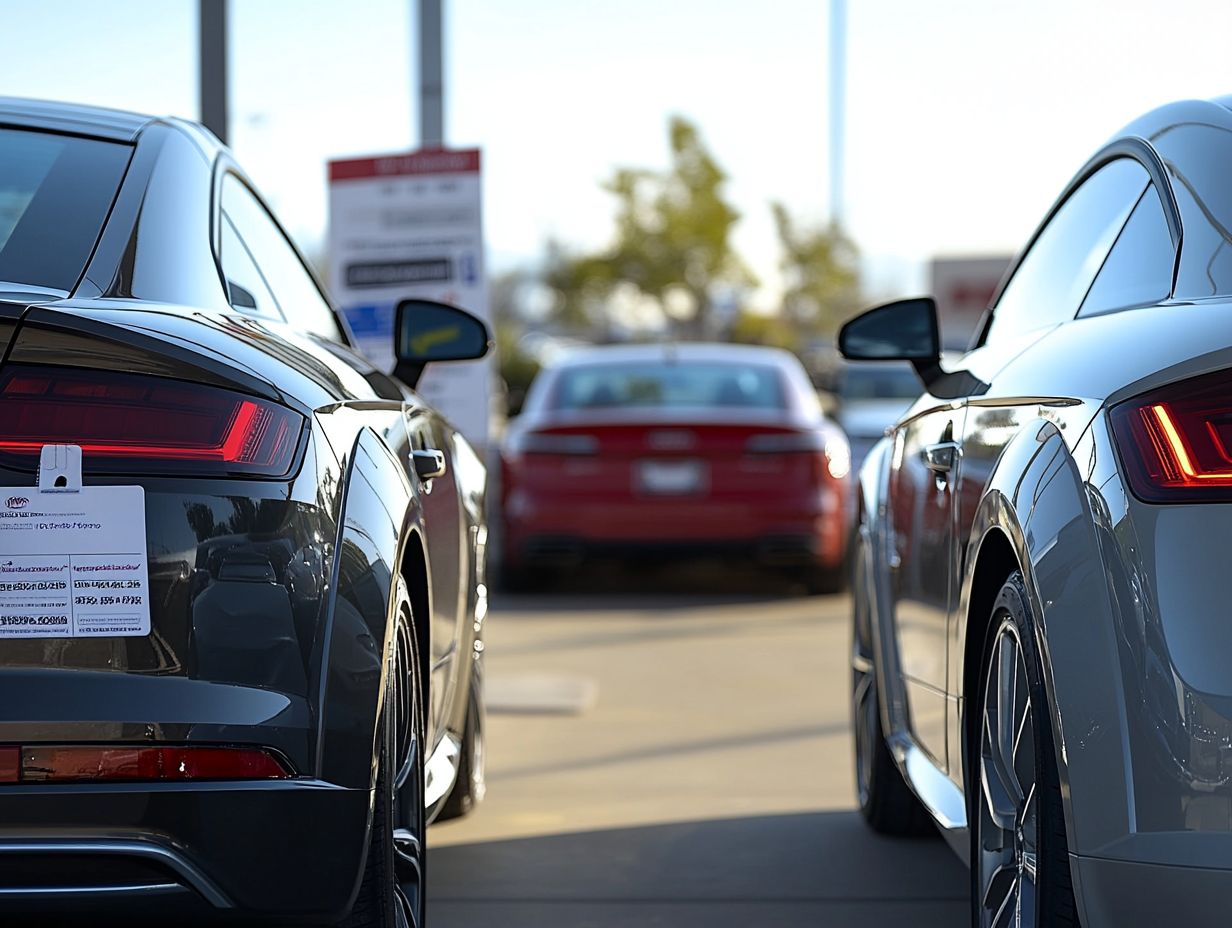
- New cars typically have a higher cost due to factors such as inflation and additional features, while used cars offer savings but may have higher maintenance costs.
- When considering a new car, weigh the benefits of having a warranty and the latest technology against the potential for depreciation. With used cars, assess the condition and history of the vehicle before making a purchase.
- Popular car models may have varying prices between new and used versions, but factors such as demand, availability, and upgrades can impact these prices differently.
Factors Affecting New and Used Car Prices
The automotive market today is shaped by many different factors that influence the prices of both new and used vehicles, including economic conditions, consumer preferences, and emerging market trends.
Car prices are fluctuating and insurance rates vary. You must navigate your financial decisions carefully to maximize your vehicle’s value.
Grasping these dynamics is essential for making informed purchasing choices in a market that is in a constant state of flux, particularly in light of significant events such as the COVID-19 pandemic, which notably impacted car sales and financing options.
Market Trends and Influences
Market trends in the automotive sector are heavily swayed by various economic conditions and consumer preferences, leading to noteworthy price fluctuations for both new and used cars.
These trends not only dictate car sales figures but also shape the types of vehicles that capture consumer interest, as you adjust your purchasing behavior based on available financing options and indicators of market recovery.
In recent months, the ongoing semiconductor chip shortage has had a significant impact on the availability of new cars, causing automakers to significantly slow down production.
As a result, inventory levels have plummeted, leading to a 22% drop in new car sales year-over-year, according to the latest industry reports. This scarcity has shifted the spotlight onto the used car market, where demand has surged, driving prices up by an astonishing 30% within the same timeframe.
Economic conditions, such as fluctuating interest rates and inflation concerns, have also influenced your preferences, making pre-owned vehicles more appealing due to their affordability and immediate availability.
Pros and Cons of Buying New Cars
When contemplating the purchase of a new car, you must carefully evaluate the advantages alongside the potential drawbacks. New vehicles often carry a higher cost, come with elevated insurance rates, and tend to depreciate quickly.
While the appeal of modern features, warranties, and cutting-edge technology is undeniably tempting, gaining a clear understanding of long-term financial implications and market trends will empower you to navigate the intricacies of new car ownership with greater confidence and clarity.
Benefits and Drawbacks

The benefits of purchasing a new car are hard to ignore you gain access to the latest technology, enjoy warranty protection, and have the freedom to customize to your heart’s content. You must weigh these factors carefully to protect your investment!
When you invest in a new vehicle, a great warranty often brings peace of mind, covering significant repairs and offering the reliability that many seek. This is particularly appealing with popular models like the Honda Accord or Toyota Camry, both renowned for their durability.
Monitor depreciation, or how much value a car loses over time, as it can be a silent financial drain. A new car might lose up to 20% of its value the moment you drive it off the lot, which can drastically affect your resale value.
While advanced safety features and state-of-the-art infotainment systems the entertainment and information features in your car can elevate your driving experience, be prepared for insurance costs to rise due to higher replacement values, especially with luxury models like the BMW 3 Series or Audi A4.
Understanding these financial implications is crucial for making a sound automotive investment.
Pros and Cons of Buying Used Cars
When you re considering the purchase of a used car, it s essential to weigh both the advantages and disadvantages. These vehicles often present better value with lower prices, but they might also carry hidden maintenance issues and limited warranties.
The used car market has transformed, presenting a variety of options. Grasping the trade-in value and resale potential is vital for making informed financial choices.
The benefits of purchasing used cars often include reduced costs, better vehicle value retention, and slower depreciation. However, keep in mind that there can be more chances of needing repairs and historically limited financing options. It’s crucial for you to evaluate your financial decisions thoroughly, considering long-term ownership costs in addition to the initial purchase price.
Many individuals find that previously-owned vehicles come with a significantly lower price tag, making them a more budget-friendly choice than brand-new models. This affordability isn’t just about the sticker price; it also extends to insurance costs and registration fees, which tend to be lower for used vehicles, further enhancing their financial allure.
That said, some older models may lack advanced safety and technological features found in newer cars like backup cameras or adaptive cruise control which can detract from your overall driving experience.
Comparing Prices of Popular Car Models
When you compare prices of popular car models like the Ford F-Series, Tesla Model Y, Chevy Silverado, and Toyota Camry, grasping the nuances of both new and used car prices becomes essential.
Market trends significantly impact purchase prices, giving you the power to make informed decisions based on the vehicle’s value and the current pricing dynamics within the automotive sector.
Price Differences and Factors
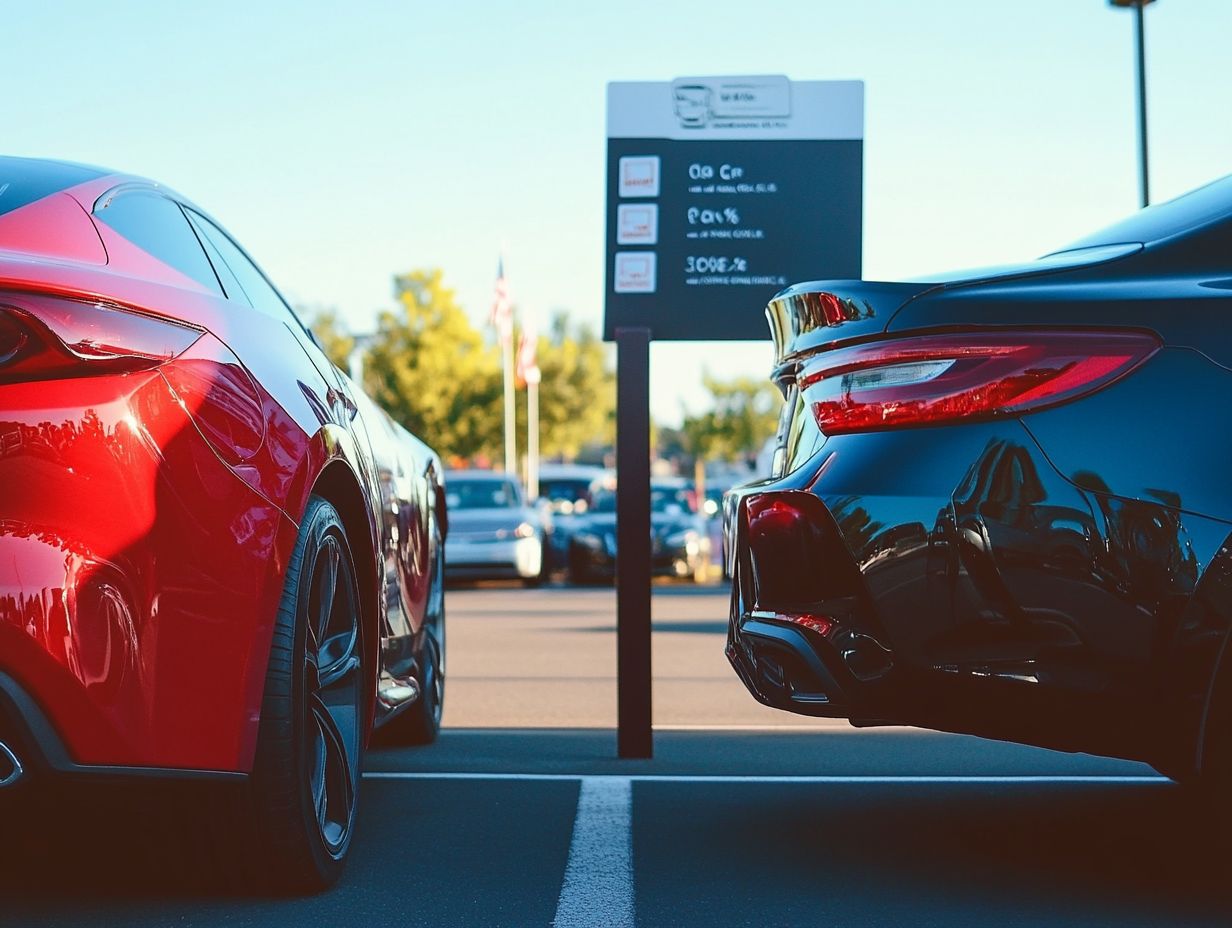
Price differences between new and used cars are shaped by a variety of factors, including the popularity of the model, current market trends, and the overall condition of the vehicle. By understanding these elements, you can better navigate the intricate world of car pricing and make more informed purchasing decisions.
Depreciation rates are particularly significant here; popular models generally hold their value better than others, resulting in sharper price drops for less sought-after vehicles. As market trends fluctuate often swayed by economic conditions and consumer preferences demand and pricing for both new and used cars are directly affected.
For example, during periods of economic uncertainty, you may find yourself leaning toward more budget-friendly used options, which can inadvertently drive their prices up. On the flip side, if there s a surge in demand for electric vehicles, you ll likely see new models prices climb as manufacturers scramble to meet consumer interest.
Tips for Getting the Best Deal on a New or Used Car
To secure the best deal on a new or used car, you should embrace effective negotiation strategies and explore a range of financing options that suit your budget and financial aspirations.
By understanding market recovery trends, you can enhance your purchasing power, positioning yourself to take advantage of favorable pricing and competitive insurance rates.
Negotiation Strategies and Other Considerations
Effective negotiation strategies are essential for securing favorable terms when purchasing new or used cars. Factors such as financing options and insurance rates can heavily influence the overall cost. By mastering these tactics, you give the power to yourself to make informed financial decisions that elevate your purchasing experience.
As you embark on your car-buying journey, begin by thoroughly researching market prices for the models you desire. This foundational step not only sets a benchmark for negotiations but also illuminates the relationship between trade-in values and financing terms.
Understanding how these elements can reduce monthly payments or overall expenses is vital. Exploring various financing options can uncover hidden costs that may significantly impact the final price.
By keeping all these considerations in mind, you can navigate the negotiation process with confidence and secure a deal tailored to your financial needs.
Frequently Asked Questions
What is the predicted price difference between new and used cars in 2024?
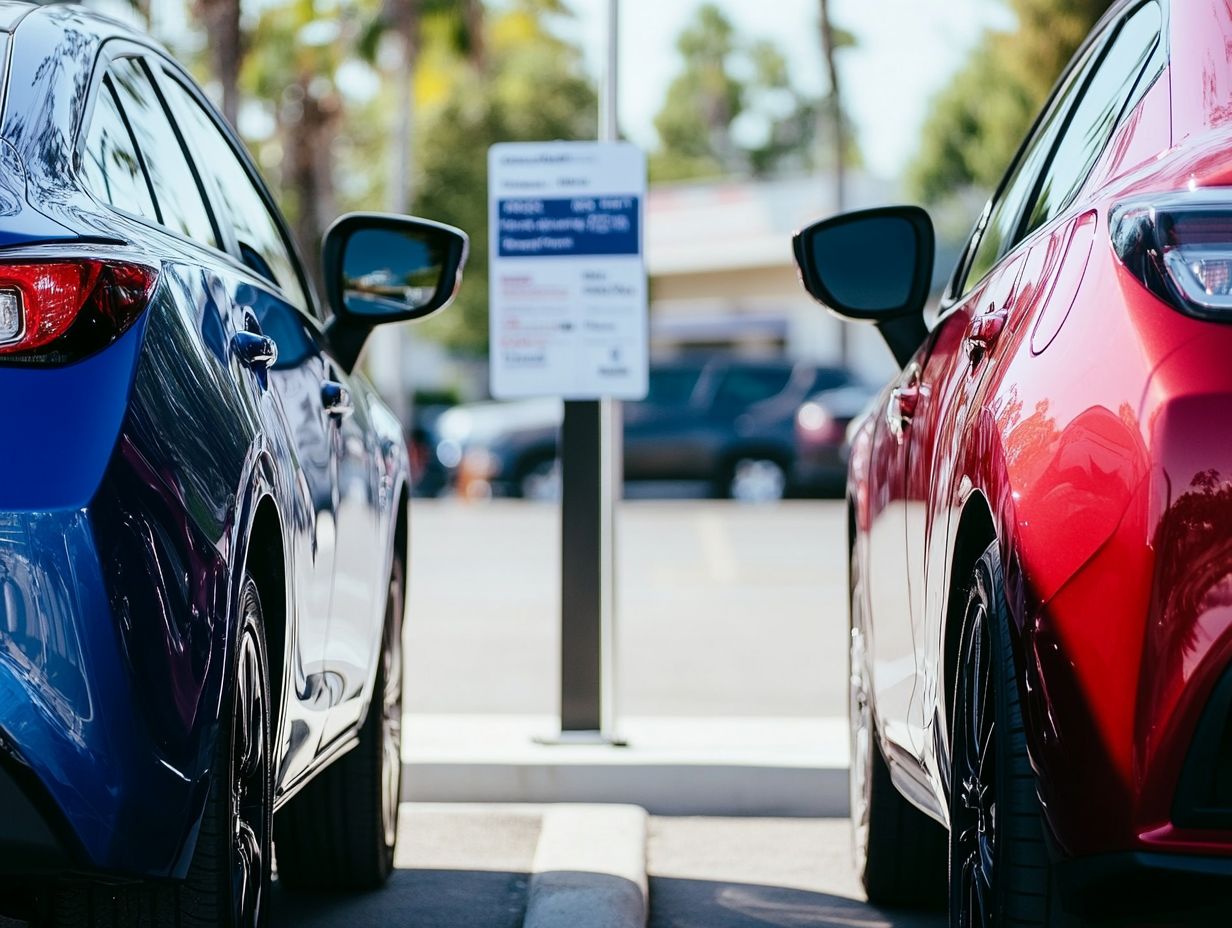
According to current market trends, the price difference between new and used cars in 2024 is expected to align with price trends in the automotive market for 2024, estimated to be around 20-25%.
Why do new cars tend to have a higher price compared to used cars?
New cars have a higher price due to various factors such as their higher demand, lower mileage, and the latest technology and features they offer.
How much can I save by purchasing a used car instead of a new one in 2024?
On average, you can save anywhere from $10,000 to $15,000 by opting for a used car instead of a new one in 2024.
Will the price difference between new and used cars in 2024 vary based on the car make and model?
Yes, the price difference between new and used cars will vary based on the make and model. Some car brands may have a higher depreciation rate, resulting in a larger price difference between new and used cars.
What are some factors to consider when deciding between a new or used car purchase in 2024?
Some important factors to consider when deciding between a new or used car purchase in 2024 include your budget, desired features and technology, reliability and maintenance costs, and the depreciation rate of the specific car make and model.
Can I negotiate the price for a new or used car in 2024?
Yes, it is possible to negotiate the price for both new and used cars in 2024. However, the negotiation process may vary depending on the dealership and individual circumstances, and it may be more challenging to negotiate for a new car compared to a used car.



